Slips, Trips, and Falls toolbox talk
A simple, 5 minute outline of what to cover in a toolbox talk on Slips, Trips, and Falls.
Download a Slips, Trips, and Falls toolbox talk pdf
Slips, trips and falls are a common reason for many of the injuries in workplaces. They can cause minor injuries but can also lead to serious, long-term injuries. Many slip, trips and falls are avoidable and there are usually easy solutions a workplace can apply to control the risk, either by eliminating or minimising it. It could be as simple as cleaning up a spillage straight away, or moving a cord off a walkway which can prevent injuries from occurring.

Why run a Slips, Trips, and Falls Toolbox Talk?
- Prevent unnecessary injury from slip, trips and falls by improving awareness and training
- Fewer injuries means higher productivity
- Makes sure workers know what to look for and what to do about it to reduce the risk of an injury occurring
What to watch out for that are common causes of slip, trips and falls?
- Poor housekeeping & messy sites
- Poor lighting
- Uneven walking surfaces
- Clutter on site
- Uncovered cords and cables
- Weather conditions (e.g. rain, ice, dust)
- Obstructed views
- Unsuitable footwear
- Distractions (e.g. cell phone, other workers)
What can you do to help prevent slips, trips and falls occurring?
- Keeping work areas clear & tidy from clutter, obstructions and rubbish
- Any waste placed in designated bins
- Clean up any leaks or spills immediately
- Put tools and equipment away
- Wear suitable footwear (e.g. grippy, anti-slip)
- Ensure work areas are well lit and sufficient light for work
- Keep cords and cables out of walkways, covered or secured
- Be aware of your surroundings and focus on what you are doing
- Work to the weather conditions
What if a slip, trip or fall occurs or nearly occurs?
- Report all slip, trip and fall accidents and near misses, with or without injury, this will help identify the hazards and implement control measures to prevent reoccurrence
Key takeaways
- Simply cleaning up your work area as you go, can help reduce slip, trips and falls
- Make sure you are always aware of your surroundings and look where you are walking
If you see a hazard that has the potential to cause a slip, trip or fall then pick it up or fix it – don’t wait for someone else to do it. Do it yourself!
Sales Inquiries Contact:
- AU 02 5104 6116
- NZ 09 886 3309
Support Inquiries Contact:
- [email protected]
- Help Centre
- Media Enquiries
- Toolbox Talk Topic Tool
- Health & Safety Consultant Directory
- Terms and Conditions
- Privacy Policy
- Account Owner Terms
- Facebook logo to SaferMe FACEBOOK PAGE
- Twitter logo to SaferMe twitter PAGE

Toolbox talks for safety experts
How To Prevent Slips, Trips, And Falls
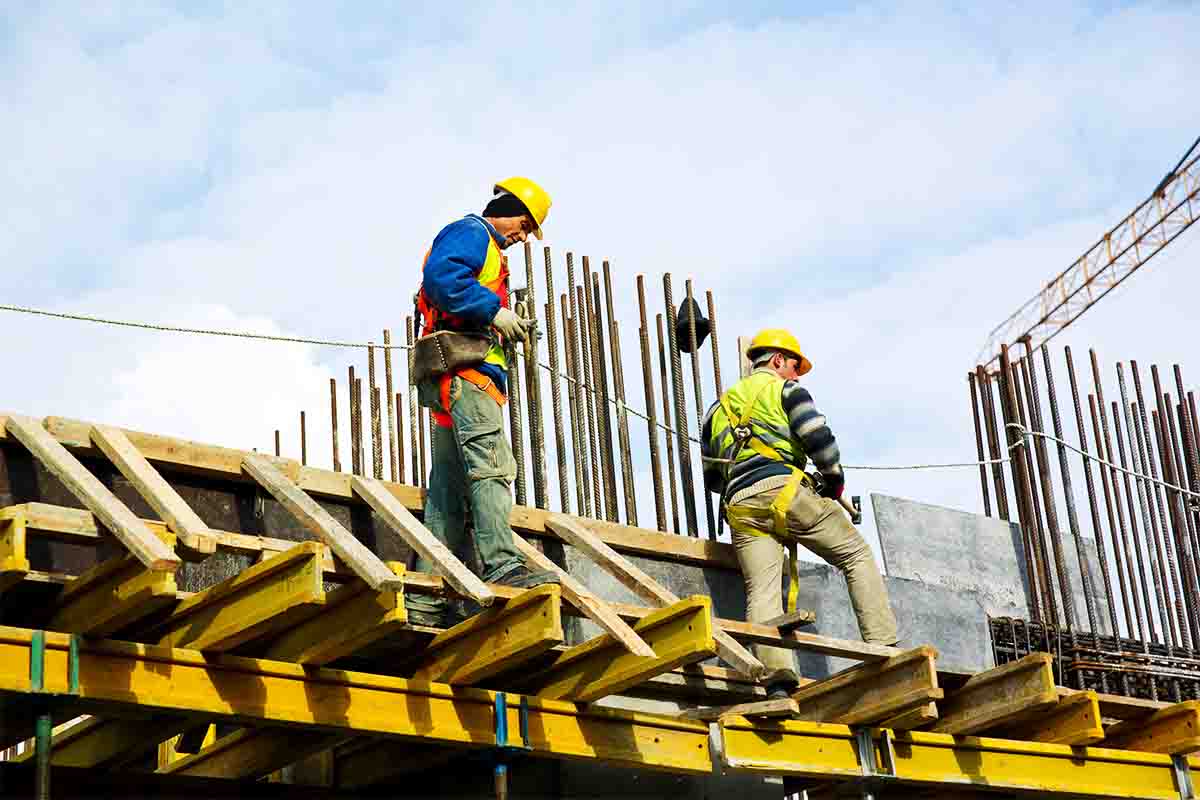
Nobody ever thinks that they will be the ones to slip, trip, or fall. Everything is going smooth until it’s not. The construction industry accounted for just less than 50 percent of all fatal falls, slips, and trips in 2020.
Unfortunately, this is not as surprising of a statistic as it should be. You might think that with the inherent risks of the trades, we should expect there to be such incidents. But slip, trip, and fall injuries are preventable.
Nothing will slow your work down more than a workplace injury. So, let’s see how we can contribute to the prevention of slips, trips, and falls.
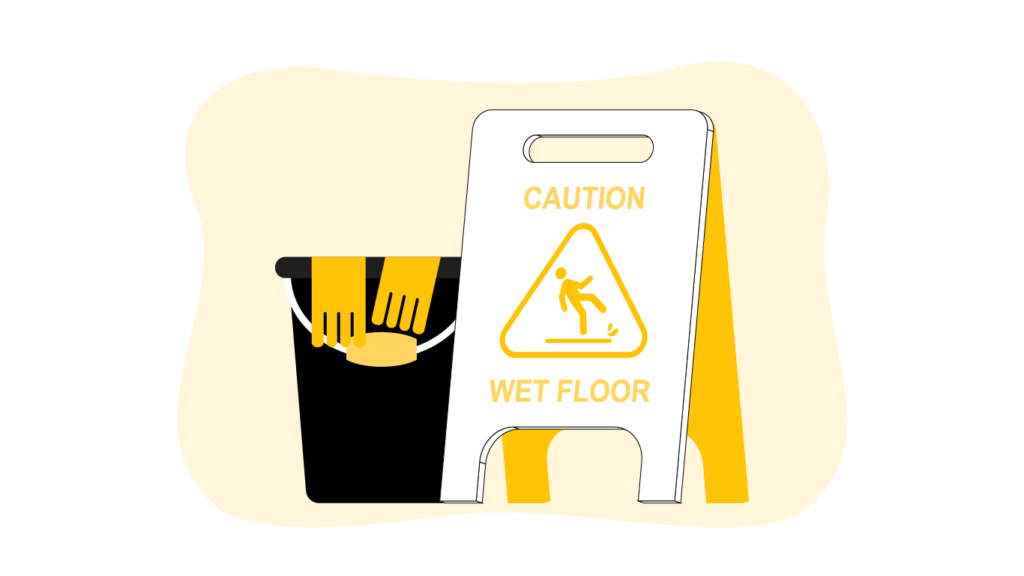
“Prevent falls and slips, or you’ll have a hospital trip.”
Why Toolbox Talks & Safety Is Important
OSHA and other organizations encourage daily toolbox talks that give statistics and produce general awareness about workplace safety hazards. Sharing statistics and experiences like those mentioned above can be beneficial in increasing awareness so that you can prevent workplace injuries or death.
Reminders can help workers to be more cautious and aware of fixing problems before they happen and prevent accidents in general. An example toolbox talk template can be seen below.
OSHA Regulations & Standards for Slips, Trips, and Falls Hazards
An understanding of OSHA regulations can help us to be aware of data-driven safety measures that should be put in place to prevent injury and death. Relevant standards include:
- 1910 Subpart D – Walking-Working Surfaces ,
- 1910.36 – Design and construction requirements for exit routes and
- 1910.37 – Maintenance, safeguards, and operational features for exit routes
However, beyond just giving rules, OSHA recommends implementing programs and procedures to mitigate risks, so we must establish a job site culture that expects everyone to follow those regulations.
OSHA regulations identify the following challenges related to slips, trips, and falls:
- Poorly organized job sites can result in workers tripping over tools, materials, and trash. Bad housekeeping and failure to dispose of garbage or clear out debris and residue can also result in a compounding pile-up one day after the next, thus resulting in trip hazards. OSHA officers can perform random walkthroughs of job sites, and if they decide your housekeeping is not in order, they will fine the company.
- Falling from ladders is a real danger because of improper setup. OSHA 3150 mandates that you set up scaffolding and ladders on solid-level surfaces. You also might be in the bad habit of carrying items up and down an extension ladder, step ladders, or scaffolding. OSHA standards highlight that you should maintain 3 points of contact with your hands and feet. That means you can’t carry things up the ladder. It would be best if you instead used a roof derrick for more oversized items or a bucket and rope to hoist equipment and tools to upper levels.
- Utilizing fall protection is essential in preventing falls , which have the highest potential for extreme injuries and death. The construction industry has been able to choose the fall protection systems it uses on a case-by-case basis since the 1990s. In 2017, OSHA extended this freedom to general industry. In the construction industry, personal protective equipment such as harnesses and lanyards is expected to be worn at heights 6 feet and above. On open exposures that are 4 feet and higher, you should use guardrails and toeboards.
Slips, Trips, and Falls Hazards
To work towards the prevention of slips, trips, and falls, we need to understand what a safety hazard is.
Examples of safety hazards in the construction industry are the following:
- Uncovered cables on the floor
- Uneven surfaces
- Debris or waste caused by poor housekeeping
- Wet surfaces
- Ladders that haven’t been secured

Slips, Trips, and Falls Toolbox Talk Template
In order to prevent slips, trips, and falls, it is important to be aware of the hazards that can cause these types of accidents. Some common causes of slips, trips and falls on construction sites include:
- Wet or icy surfaces
- Poor lighting
- Loose debris
- Tools on the ground
- Unguarded openings
- Lack of proper fall prevention equipment
To avoid these hazards, take the following precautions:
- Wear appropriate shoes with slip-resistant soles
- Use caution when walking on wet or icy surfaces
- Make sure all walkways and stairs are well-lit
- Sweep up any loose debris or tools on the ground
- Use appropriate PPE
- Understand how to use PPE correctly and safely
Who is responsible for preventing slips, trips, and falls?
Everyone at work has a responsibility. The employer is ultimately responsible, but we should all look out for the well-being of ourselves and our colleagues.
We do this by learning and understanding instructions for PPE and for alerting colleagues to openings; by tidying away tools after use, and cleaning out workspaces. If you spot an issue relating to the weather or to lighting that is faulty, report it so that the company can fix it before it causes an accident.
How To Prevent Illnesses And Injuries Related To Slips and Falls
- Immediately clean up any spills, and demarcate any hazards —rope-off areas where there could be chemicals or other condensates. An injury could occur from hitting the ground due to a slip. Moreover, severe illness and death could result from slipping in corrosive or biohazardous materials.
- Cover holes and eliminate uneven surfaces that could have foot traffic. You could unknowingly trip and fall to the ground. If the hole is large enough, you could fall in, thus risking more than a minor injury.
- Provide proper lighting to ensure visibility so you don’t trip on what you cannot see.
- Use fall protection in the form of guardrails and personal protective equipment so that a person cannot fall over an open exposure, even accidentally. Falling from heights 4 feet and above puts you at serious risk of death.
- Establish a routine to inspect fall protection. It’s in place to save your life. You will want to make sure that it will work to protect you from injury or death.
Questions for the Employees
After a discussion, you may want to test everyone’s knowledge and retention of the information to apply what they’ve learned.
- What percent of workplace fatalities are from the construction industry?
- What are the potential causes of injury, and what could happen on your job site?
- How would you feel if an injury or death occurred on your job site?
- What can you personally do to prevent slip, trip, and fall incidents?
- What is our slips, trips, and falls safety talk slogan?
Email Template To Promote Slips, Trips, And Falls Safety
Sending a concise email can help to promote safety. Use this email template, which includes the highlights, and add more bullets as needed to address particular concerns for your job site.
Hello Team,
Let’s all be aware to prevent falls and slips, or someone will have a hospital trip.
The construction industry accounted for almost 50 percent of all fatal falls, slips, and trips in 2020.
Understanding our job site hazards and the ways we can mitigate risks is crucial to prevent us from being amongst those statistics.
- Remember to clean as you go and stay organized.
- Use handrails and ask for help when carrying big loads so that the extra hand is available to grab railings and you have full awareness of where you are walking.
- Use fall protection and PPE.
Increase your awareness as you are working. When you see a potential hazard, immediately report it and work to resolve it to prevent injury to yourself and others.
Construction Site Management/Foremen
Create A Safety Culture
You are now highly knowledgeable in the prevention of slips, trips, and falls. It is your responsibility to encourage your workers to increase awareness of potential hazards and processes for reporting. All incidents are preventable ! Remember, you must “prevent falls and slips, or you’ll have a hospital trip.”
Slips, Trips, and Falls Safety Meeting Topics
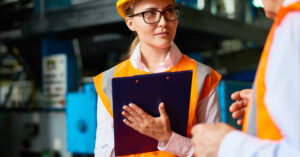
What to Look for When Performing a Loading Dock Safety Inspection
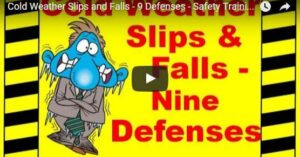
Cold Weather Slips and Falls – 9 Defenses
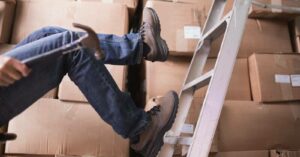
Ladder Safety
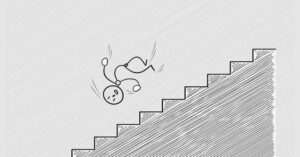
Stairway Fall Protection
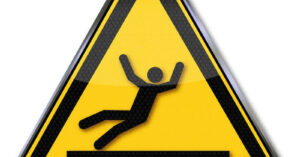
Prevent Slip, Trip and Fall Accidents
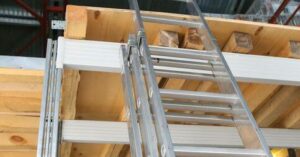
Ladder Storage

Avoid Slip and Trip Accidents
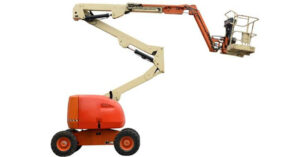
Aerial Platform Safety
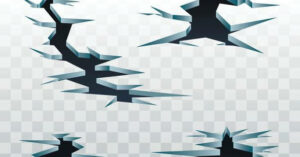
How to Respond When Someone Falls Through the Ice
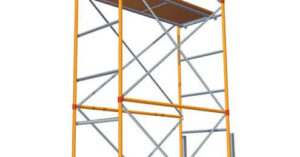
Scaffold Safety
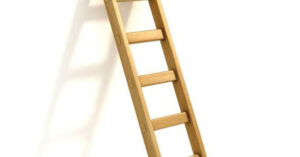
Fixed Ladder Safety
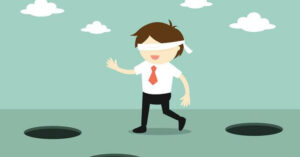
Avoid Holes
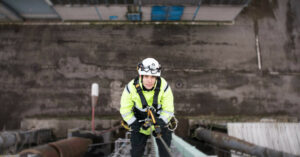

How to Properly Wear a Full Body Fall Protection Harness
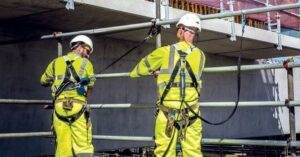
Self-Retracting Lanyards
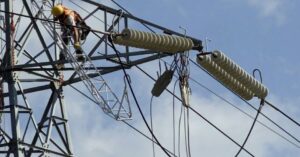
Fall Safety
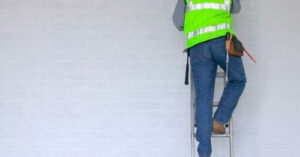
Master the Three-Point Contact Rule
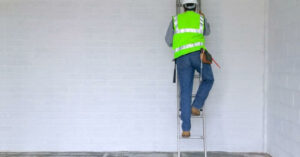
Be Secure Above the Ground
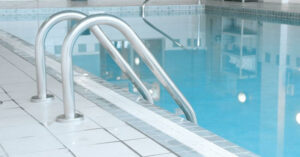
Don’t Run Around Pools
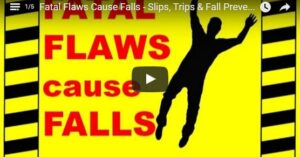
Fatal Flaws Cause Falls – Slips, Trips & Fall Prevention
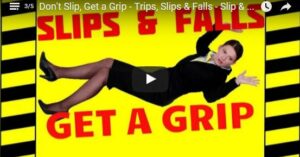
Don’t Slip, Get a Grip
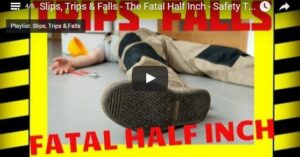
Slips, Trips & Falls – The Fatal Half Inch
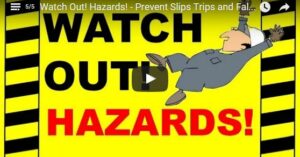
Watch Out! Hazards! – Prevent Slips Trips and Falls

- 513-891-7290
- Raymond Lift Trucks
- Rental Equipment
- Used Forklifts
- Task Support Vehicles
- Battery Monitoring System
- iTRACK Asset Management
- iWAREHOUSE Fleet Management
- Storage Solutions
- Automatic Storage and Retrieval Systems
- Automated Lift Trucks
- Radioshuttle System
- Pick Module
- Modular Offices
- Pharmaceutical
- Forklift Attachments
Dock and Door Equipment
- Forklift Batteries
- Industrial Battery Chargers
- Battery Handling Systems
- Fast Opportunity Charging
- Industrial Fans
- Warehouse Products
- Forklift Maintenance
- Battery Maintenance
- Dock Door Maintenance
- Conveyor Maintenance
- Kardex Remstar Maintenance
- Operator Training
- Pedestrian Training
- Technician Training
- News and Events
- Literature Downloads
- Sales and Service Network
- Toolbox Talk
Slips Trips Falls
- Information
Slips, Trips & Falls
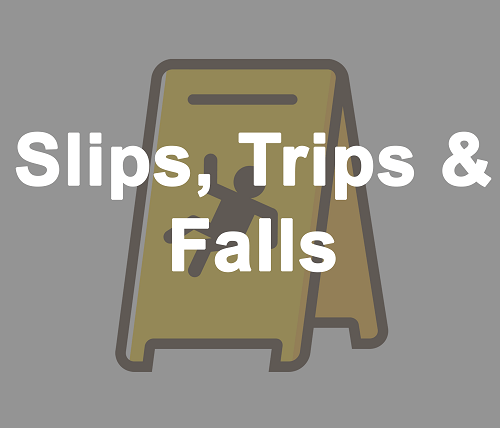
Slips, trips and falls can result in head injuries, back injuries, broken bones, sprained muscles, cuts and lacerations or even death. A slip occurs when there is too little traction or friction between the shoe and walking surface, often causing a person to fall backwards. A trip occurs when a person's foot contacts an object in their way or drops to a lower level unexpectedly, causing them to be thrown of balance and typically fall forwards. A fall occurs when you are too far off balance. Some factors contributing to slips, trips and falls include wet slippery surfaces, environmental conditions, insufficient or inadequate lighting, changes in elevations or climbing and descending stairways, and housekeeping issues in working and walking areas.
- Wet and slippery surfaces. U s e absorbent mats, remembering that unanchored mats may cause slip hazards themselves. If you must walk on a slippery surface, wear proper footwear for better traction, or use rails or another stable object that you can hold onto.
- Environmental conditions such as rain, ice and snow can cause major slip hazards. No matter how well snow and ice are removed from sidewalks, parking lots and the surrounding streets, people will invariably encounter some slippery surfaces.
- Insufficient lighting can make it difficult to see obstacles or notice changes in a walking surface. Moving from light to dark areas or vice versa can cause temporary vision problems that may be just enough to cause a person to slip on an oil spill or trip over a misplaced object.
- Changes in elevation. Even a change in walking surfaces of ¼ to ½ inch can be sufficient to cause a trip. Curbs, cracks in the sidewalk, flaws in parking lots, potholes, uneven lawns, ramps and single steps are all examples of these hazards. Keeping stairs in good repair is essential to preventing accidents. Make sure the stairs have secure handrails and guard rails, even tread height, and are free of deteriorating covering to prevent an accident.
- Proper housekeeping in working and walking areas can reduce the chances of slips, trips and falls on a work site. It is important to maintain a safe working environment and a clean walking surface free of obstacles such as clutter, material stacked or dumped in passageways and obstructions across hallways.
Most slip, trip and falls incidents are easily preventable if you follow one simple piece of advice: watch where you're going ! Walking is such a common activity that most people pay little attention to potential hazards, such as hidden steps, loose irregular surfaces, smooth surfaces, wet spots, and oil that can make it difficult for a person to maintain their footing. Ensure you report even a minor fall as it could prevent someone from experiencing a more serious injury down the line.
For more information about partnering with Raymond Storage Concepts and how we can satisfy your parts needs, please contact us today.
You May Also Like:
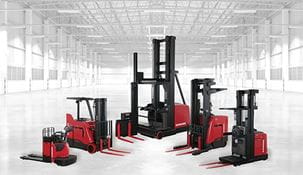
Raymond Forklifts
Raymond manufactures innovative electric lift trucks that deliver a lower total cost of ownership.
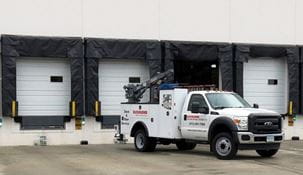
Reduce energy consumption, increase worker productivity and safety with our loading docks and commercial doors.
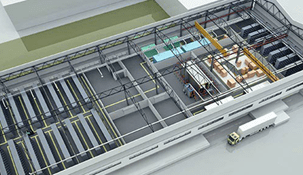
Engineered Solutions
After working with you to understand your specific needs, we evaluate potential solutions to determine which best meets your operational and financial requirements.
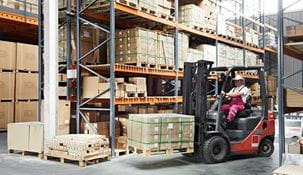
Fleet Maintenance Management Software | iTRACK | Raymond
Understand and manage fleet and asset maintenance data and costs with iTRACK.
- iWAREHOUSE GATEWAY
- Employee Email
- Cincinnati, OH
- Columbus, OH
- Louisville, KY
- © 2024 Raymond Storage Concepts Inc.
- Privacy Policy
- Cookie Notice
- Terms of Service

5480 Creek Road, Cincinnati, Ohio 45242

Why a Slips Trips and Falls Safety Talk Is Important

Common Slip Trip and Fall Incidents
Accidents from heights can be fatal or cause significant harm, and include accidents from ladder , mobile communication devices, rooftops and other raised buildings.
Slip and fall accidents on slick surface like ice and snow are often one of the hazards during winter. Slips and trips at workplaces are frequently caused by wet floors or spilt beverages.
Trips could be caused by a wide variety of factors, such as poor housekeeping , steep inclines, bad lighting, and unsuitable equipment.
Strategies to Reduce the Risk of Slips Trip, and Fall
Utilize appropriate protection of any gaps or open windows to protect employees and use safeguards to prevent accidents. If safeguards aren’t an option, make sure you have proper protection equipment. A full-body harnesses with a self-retracting rope tied to an approved origin point is an example of appropriate fall protection.
- Maintaining appropriate housekeeping is essential in preventing slips, trips, and falls. Items on the floor pose a risk to everyone moving or operating in the vicinity. Keep well-defined walking trails throughout the work space. Keep well-organised laydown areas for tools and materials to keep them out from the way of worker movement.
- Inspect your working atmosphere for any damp, slick, or slippery walking areas. Place warning signs on any potentially hazardous areas until the problem is resolved.
- Utilize appropriate practises such as three touchpoints and maintaining your belts buckles within the sides of the ladder when climbing or leaving a portable or stationary ladder. Leaning to grasp stuff can throw you off balanced and cause you to slip.
What Your Staff Should Learn From a Slips Trips and Falls Safety Talk
One of the items to cover in a slips trips and falls safety talk, is when crossing difficult terrain, it’s critical to keep alert. When someone shocked by a sudden sound, going too fast, or even conversing with a co-worker, their attention can be distracted from the ground conditions. This can prevent employees from recognising trip risks, possibly resulting in an unintentional fall.
Individuals who labour on dirt or grassland are accustomed to decelerating when the surface is soft or moist. But, once the earth has started to dry up after rain, the situation might be just as dangerous. Large tyre tracks might be left behind because big equipment went through the region while the earth was moist. These trails harden as the earth dries, producing deep grooves. These grooves are a major tripping danger. Not just that, but if someone trips over one of these and falls, they face severe harm because they will most likely fall on the same deep, hard divots that caused the trip in the first place.
How to Avoid Slipping Tripping or Falling
Remove as many hazards as feasible. As previously stated, walking at a pace that is suitable for the conditions is important. Other distraction, such as dragging equipment and machinery, should be avoided as well. Perhaps one of the lorries required in the region could transport these materials.
Each day, walk around the jobsite looking for hazards that should be avoided. This could include, but is not limited to, the following.
- Recognizing grooves, slick surfaces, and other unstable terrain on the jobsite.
- Locate pits and ditches on the property.
- Keep the treads of shoes and boots clean to improve grip.
- Do not cut through trash banks to save time.
Furthermore, to reduce the risk of accidents while operating on uneven terrain, always keep pathways and areas surrounding ladders clear of equipment and trash. Give particular attention to the placement of cables and hoses, as they might cause hazardous situations.
What Else to Talk About in Your Slips Trips and Falls Safety Talk
In a slips trips and falls safety talk, explain how if someone is being distracted, it raises the risk of harm with your staff and devise a strategy for avoiding such distractions. Also, talk about the soil conditions you’ll be operating with and brainstorm ways to prevent the dangers that come with them.
- Find an evident danger, including slick conditions or a large groove made by bulldozers, and explain the dangers and how to avoid them.
- Highlight the importance of maintaining the bottoms of your shoes or boots cleaned. Could provide tool, such as a stiff brush or a twig, for employees to use in the fields to clear off mud or muck.
- Inform staff that any harmful situations should be reported.
If you need a provide a toolbox talk related to slips trips and falls, then our Slips Trips and Falls Toolbox Talk might be of interest to you.
Alternatively, if you are looking for a range of ready to deliver toolbox talks, then you might be interested in our toolbox talk packages which include range of toolbox talks at a cost-effective price.
Share This Story, Choose Your Platform!
Related posts.
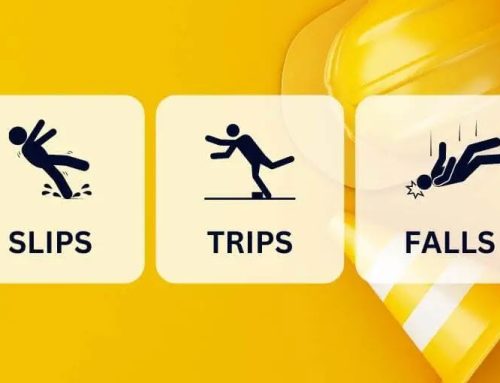
How to Deliver a Toolbox Talk on Slips Trips and Falls
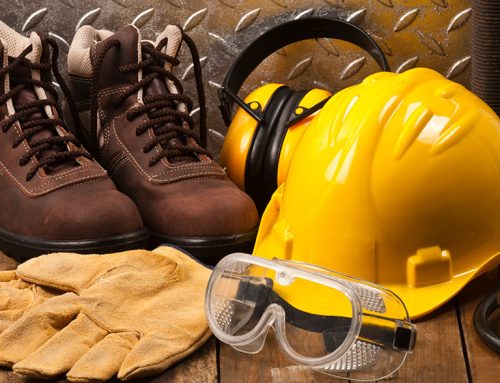
How to Deliver a PPE Toolbox Talk in the UK
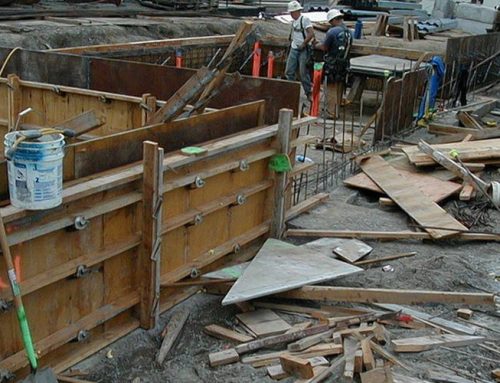
How to Develop a Safety Talk on Housekeeping
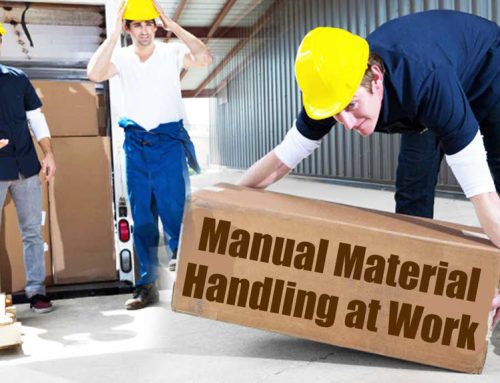
What to Include in a Material Handling Toolbox Talk
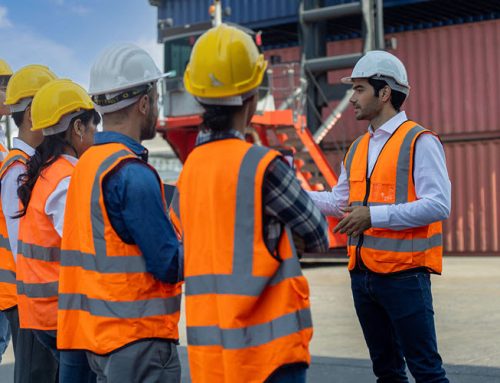
How to Arrange an Effective Safety Talk
Privacy overview.

IMAGES
VIDEO
COMMENTS
7 Tips for Preventing Slips, Trips, and Falls. Fortunately, most slip, trip, and fall incidents are avoidable. By using the right safety tools and training employees, companies can prevent these incidents from happening in their workplaces. Safety officers should take note of the following aspects to keep their workplaces and fellow employees ...
Learn how to prevent slips, trips and falls in the workplace with this 5-minute outline of what to cover in a toolbox talk. Find out the common causes, solutions and key takeaways of this safety topic.
Slips, Trips, and Falls Safety Talk. Slips, trips, and falls are one of the leading causes of injuries and fatalities in the workplace. According to OSHA, slip, trip, and fall incidents cause 15% of all accidental deaths and are second only to motor vehicle incidents as a cause of fatalities on the job. These types of incidents can result in ...
10-minute safety talk. Slip, trip, and fall. hazards. Key takeaways: • Many workers are hurt due to slips, trip, and falls. • Housekeeping is key to preventing slips, trips, falls. • Keep walkways and paths in good condition and free of items and debris. • Move with a clear view of surroundings, have good footwear tread, and avoid ...
Hazards in the Workplace. In 2022, 865 workers died in falls, and hundreds of thousands were injured badly enough to require days off of work. A worker doesn't have fall from a high level to suffer fatal injuries; 144 workers were killed in falls on the same level in 2022, according to Injury Facts. Construction workers are most at risk for ...
Fall-proof your home When it comes to falls, the choices you make are important, both at work and home. As a pedestrian, pay special attention on sidewalks and in busy public areas - never assume others are watching out for you. Help the older adults in your life fall-proof their homes, especially their bathrooms, to prevent injury.
Slips, Trips, and Falls Toolbox Talk Template. In order to prevent slips, trips, and falls, it is important to be aware of the hazards that can cause these types of accidents. Some common causes of slips, trips and falls on construction sites include: Wet or icy surfaces. Uneven surfaces.
Slips, Trips, and Falls Prevention. Some slip, trip, and fall prevention measures are permanent, including: Adequate lighting. Handrails. Slip-resistant surfaces in high-risk areas. Effective drainage, ventilation, and other methods to keep surfaces dry. Marking the edges of steps or elevation changes.
10-minute safety talk Slips, trips, and falls are a leading cause of workplace injuries across industries. Thousands of disabling injuries, even deaths, occur each year because of slips, trips, and falls. Using the Stop the Fall model, we can identify the three biggest factors of slips, trips, and falls. Understanding these factors helps us
Slips, Trips and Falls - Safety Talk Handout WHAT'S AT STAKE You can slip, trip and fall in all kinds of workplaces, from offices to construction sites. Falls are the leading cause of injuries in North American workplaces. WHAT'S THE DANGER Most workplace falls which cause injury or death are falls from the same level, not from heights. EXAMPLE
Slips, trips, and falls are the second most common cause of workplace injuries in the United States. In this video we look at the causes and prevention and h...
Falls are when you lose contact with the walking or working surface and fall. Falls can occur either on the same level or from an elevated surface. Falls from an elevated surface are second only to motor vehicle accidents in the cause of work place fatalities. The hazards which result in slips, trips and falls generally can be grouped into ...
1. Fall at same level. 2. Fall to lower level. Ways to Prevent Slips, Trips and Falls. 1. Where possible, avoid walking on wet/slippery surfaces; wipe off the bottom of wet footwear. 2. Use flashlights or helmet lights to stay clear of holes or floor openings, wet or slippery surfaces, and debris or equipment.
Slips, trips, and falls cause nearly 700 fatalities per year and many more injurious accident in the workplace according to the Bureau of Labor Statistics. There are three physical factors involved in slips, trips, and falls: friction, momentum, and gravity. Each one plays a role. Friction is the resistance between objects, momentum is affected ...
Safety Talk Slips, Trips, and Falls Slips, trips, and falls can result in a wide range of serious injuries and account for approximately 20% of all work-related injuries. This is second only to auto accidents. How to Minimize the Risk 1. Assess the area for slip, trip, and fall hazards prior to beginning work. 2. Pay special attention to ...
This talk will cover: the causes and prevention of slips, trips and falls. 1. Most injuries from slips, trips and falls occur because of poor housekeeping. 2. Many items such as coiled cables, hand tools, lengths of pipe or timber etc left on the ground will trip someone if not deposited in a safe position. 3.
Slips, Trips & Falls - The Fatal Half Inch. Slips, trips and falls constitute the majority of general industry accidents and result in back injuries, strains and sprains, contusions, and fractures. Trips & Falls are the second leading…. Read More.
Slip Hazards Safety Talk. Slips, trips, and falls are one of the leading causes of injuries and fatalities in the workplace. According to OSHA, slip, trip, and fall incidents cause 15% of all accidental deaths and are second only to motor vehicle incidents as a cause of fatalities on the job. These types of incidents can result in life-changing ...
Slips, Trips & Falls. Slips, trips and falls can result in head injuries, back injuries, broken bones, sprained muscles, cuts and lacerations or even death. A slip occurs when there is too little traction or friction between the shoe and walking surface, often causing a person to fall backwards. A trip occurs when a person's foot contacts an ...
Toolbox Talk: Slips, Trips, and Falls Safety Talk Slips, trips, and falls are one of the leading causes of injuries and fatalities in the workplace. According to OSHA, slip, trip, and fall incidents cause 15% of all accidental deaths, and are second only to motor vehicle incidents as a cause of fatalities on the job.
Tool Box Talk - Slips, Trip and Falls - Winter Safety Tips This week we're looking at Slips, trips and falls. It is the number 1 reason for an industrial injury in the United States. Today let's look at walking outside when it's cold and snowy or icy. ... Be prepared to fall and try to avoid using your arms to break your fall. If you fall
In a slips trips and falls safety talk, explain how if someone is being distracted, it raises the risk of harm with your staff and devise a strategy for avoiding such distractions. Also, talk about the soil conditions you'll be operating with and brainstorm ways to prevent the dangers that come with them. Find an evident danger, including ...
Some of the most common workplace injuries are caused by slips, trips and falls. How do safety managers identify their causes and implement effective solutions? May 01, 2024;
Become an NSC member today. It's affordable and can help save a life. Email [email protected] or call (800) 621-7619 for answers to your questions. Download this application. Take a look at the Member Benefits Guide. Joining a Safety Organization with the National Safety Council provides access to thousands of safety resources, products ...